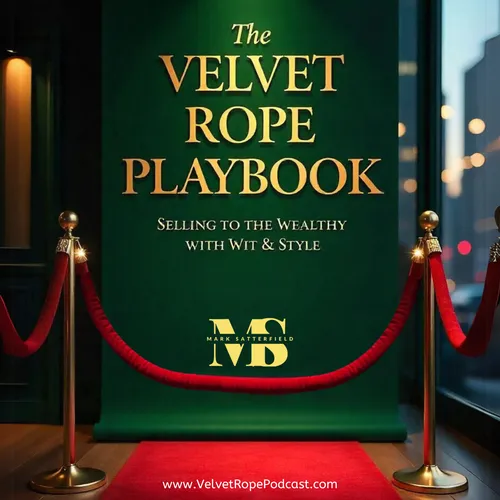Bougie Dress Code: Looking Effortless Takes Effort
- Author
- Mark Satterfield
- Published
- Sun 24 Aug 2025
- Episode Link
- https://velvet-rope-playbook.captivate.fm
Let’s start with a truth nobody wants to say out loud:
Looking this “relaxed” is a full-time job.
The bougie wardrobe is a masterpiece of contradiction. It whispers “I just threw this on” while screaming “I spent $480 on this sweater and I don’t even want to talk about it.” It’s not flashy. It’s not tight. It doesn’t beg for attention. It assumes it already has it.
Bougie style lives somewhere between off-duty ballet teacher and heiress doing errands before her silent auction. And while trends come and go, bougie dressing follows its own compass: neutral, natural, and just a little nonchalant.
The Unofficial Uniform
If you’re picturing a closet full of black, white, and beige—you’re not wrong. Bougie dressers operate on a muted frequency. Think soft knits, oversized silhouettes, and trousers that say “I have a house in the Berkshires, but I summer in Europe.”
There's no shouting. No rhinestones. No zippered moto jackets from the clearance section at Zara. Logos are either nonexistent or so discreet they might require a monocle.
The closest thing bougie has to a slogan tee is a shirt from a small French brand no one’s heard of. Bonus points if it was bought in Paris, even though there’s a U.S. stockist online.
Fit, Fabric, and Flex
Bougie dressing is defined by three things: texture, drape, and vibe.
The fit is slightly loose—but not lazy. It moves. It flows. It says, “I meditate, but also know my tailor by name.”
The fabrics? Natural or bust. Linen, cashmere, wool, silk—preferably raw or hand-woven. Synthetics are strictly for undergarments and “performance” pieces worn ironically.
Texture matters. You want to look like you might brush crumbs off your trousers with a flick of a manicured wrist and not even flinch if it’s sea salt from an organic sourdough.
And as for the vibe? Think: your therapist who just inherited a vineyard. Or your art dealer friend who doesn’t own a TV but somehow knows everything on HBO.
You don't dress for the weather. You dress for the moment—and the moment always calls for softness, layers, and a scarf that looks like it once attended a writers' retreat.
Seasons of Bougie
Summer means gauzy dresses, fisherman sandals, and linen everything. Straw totes, oversized sunglasses, and the suggestion of saltwater. If your look can’t double as a beach editorial in a French magazine, start over.
Fall is when bougie really shines. Camel coats. Merino knits. Charcoal cashmere. Muted plaids. The scent of leather and books and almond milk cappuccinos in the air.
Winter is the time for rich texture. Think shearling, ribbed wool, and coats that cost more than your rent but never look new. The boots are always practical, but probably Italian.
Spring is transitional and tonal. Light trenches, loafers, and something floral—but only in a “just clipped from the Parisian garden” sort of way. Bougie never wears florals that scream. Just florals that sigh.
The Bougie Color Wheel
Neutrals. Neutrals. Slightly moodier neutrals. And maybe, if you’re feeling wild, a pop of mustard or terracotta. But only in accessories. Never on the actual body. That would be gauche.
In bougie world, “color” means olive. Or oatmeal. Or slate. It’s less about standing out and more about blending into a $9,000 kitchen.
The Art of Looking Underdone
This is a crucial skill: the underdressed overdress.
You don’t look styled. You look like someone who just happens to pair vintage jeans with a Loewe tank and gold hoops that belonged to your French godmother. It’s a lie—but a convincing one.
Wrinkles are fine (if they’re linen). Hair can be messy (if it’s the kind of messy that requires product). Shoes are flat or block-heeled. Never stiletto. Unless you're channeling “I lived in Milan and still get invited to fashion week.”
And please—for the love of Le Labo—no bodycon. Bougie silhouettes are forgiving. Soft. They suggest that you’re so secure, you don’t need to be snatched. Just moisturized.
Dressing for the Occasion (And For Those Who Might Be Watching)
Dinner with “friends” (read: low-key enemies)? A crisp button-down, subtly oversized blazer, tailored trousers, no visible makeup except maybe a little cheek tint.
Brunch at a boutique hotel? An intentionally shapeless dress, sandals with arch support, and a crossbody bag that cost four figures but looks like it came from a farmer’s market in Provence.
Client coffee meeting? A knit set and your “expensive sneaker” moment—Common Projects, Veja, or something Scandinavian you can’t pronounce.
The goal is simple: never look like you're trying. Always look like you’ve just returned from somewhere expensive. Or are about to.
Final Note
Being bougie is never about the label. It’s about the layering. It’s about the lifestyle your clothes suggest. Do you own art? Have you read The New Yorker this week? Did you visit a vineyard, or are you just dressed like someone who did?
The answer doesn’t matter.
#BougieHandbook #BougieStyle #AffluentFashion #LuxuryWardrobe #HighSocietyStyle #StatusSignals #EliteStyle #ChicAndWealthy #PoshStyle #QuietLuxury
